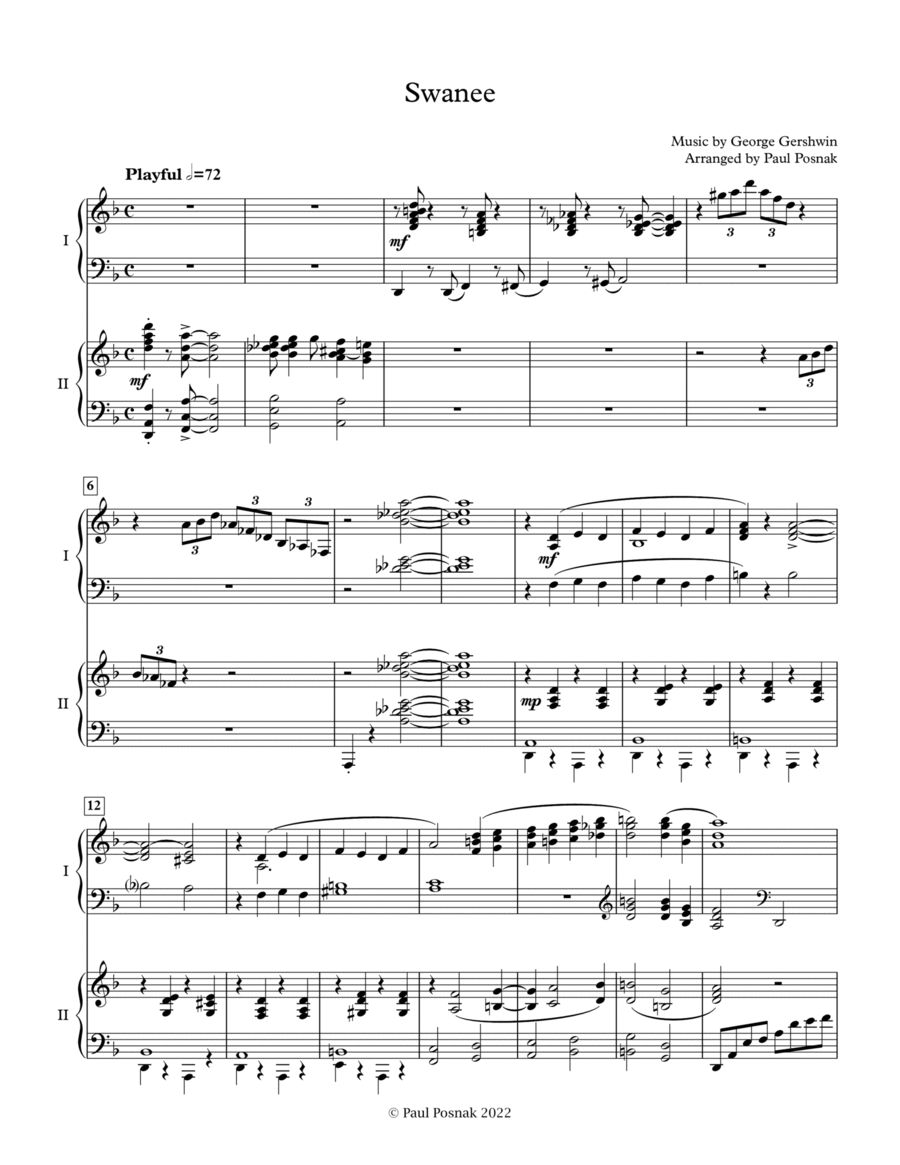2 Pianos,4 Hands,Piano Duet - Level 5 - Digital Download SKU: A0.1175185 By Paul Posnak & Anita Castiglione. By George Gershwin. Arranged by Paul Posnak. 20th Century,Classical,Jazz,Standards. Score. 10 pages. Paul Posnak #775326. Published by Paul Posnak (A0.1175185). Arrangement for 2 pianos, 4 hands of Swanee by George Gershwin.Foreword by the arranger:George Gershwin, since his days as a teenage song-plugger in Tin Pan Alley, loved the medium of two pianos. A consummate improviser with a harmonically sophisticated, jazz-influenced,orchestral approach to the treatment of melody, he was born into the great age of touring duo piano teams, such as Bauer and Gabrilowitsch, Josef and Rhosina Levine, Luboshutz and Nemenoff, and Gershwin's favorite team, Arden and Ohman. Gershwin loved the multi-voiced orchestral color, power and range of two pianists playing and improvising together. In his first major show written with brother Ira, the 1924 Lady Be Good, he incorporated the renowned team of Phil Ohman and Victor Arden into the musical theater pit orchestra, not only to add to the orchestra's sound and rhythmic drive, but also to play during breaks in the action and during Intermission. They even played encores! This successful formula was repeated for the 1926 show, Oh, Kay, and for the 1927 show, Funny Face.Gershwin's own bravura improvisations on his songs sound, even to the trained ear, like two pianos. I have transcribed (and digitally re-recorded) a number of these improvisations note-for-note from the old LP-remastered 78 rpm records and radio broadcasts. I have tried to capture his own two-fisted orchestral keyboard style: his love of inner voices, contrapuntal runs, jazz figurations, sophisticated chordal textures, and swing.These arrangements resulted from my appearance in 2003 as one of two soloists in several all-Gershwin concerts with The National Symphony Orchestra under the direction of Marvin Hamlisch. Marvin suggested that I also play a couple of my Gershwin improvisation transcriptions, and we thought it would be a perfect touch for Lorin Hollander, the other soloist, and me to play a short two-piano piece. I was surprised to find very few two-piano arrangements of Gershwin's songs. I became inspired to fill this void in the duo piano repertoire. It is my hope that these settings will offer a worthy challenge and musical reward for intermediate and advanced piano students and amateurs, and a unique addition to the duo piano literature for professional pianists and duo piano teams the world over.Paul Posnak.
